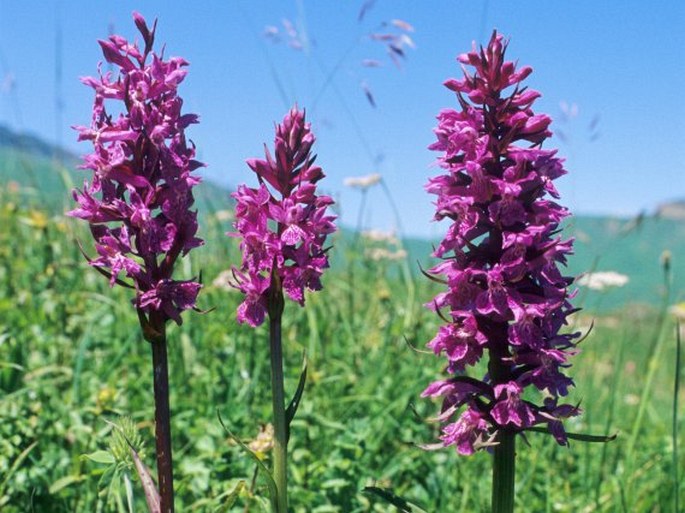Syn.: Orchis urvilleana Steud., Orchis lancibracteata K. Koch, Orchis maculata subsp. lancibracteata (K. Koch) Soó, Orchis triphylla K. Koch
Family: Orchidaceae Juss.

Distribution: Northeastern Turkey, almost whole Caucasian region including Transcaucasia, northwestern Iran; Caucasian vicarious species of Dactylorhiza maculata agg.
Ecology: Moist forests margins and glades, subalpine meadows, usually wet or at least moist, brook source areas, marshy places; 1000–2700 m asl. Blooms from June to July.

Description: Tuberose orchid, 20–60 cm tall. Stem erect, relatively slender, often purplish above, with a few or numerous leaves decreasing and becoming sparser upwards. Leaves mainly congested around the stem basis, where oblanceolate, upper lanceolate, all conspicuously, usually densely and contrastly spotted. Inflorescence initially pyramidal, later long cylindrical, usually many-flowered, with dark green or purplish green bracts, exceeding the flowers, mostly the lower. Flowers light or deep purple with more or less whitish lip mouth; lips with three lobes of which the middle is small, triangular and almost entire, the two lateral are irregularly rhomboidal and usually with an erose outer margin; lip always and sepals usually inside with numerous and mostly contrast spot ornaments, spots or dots; spur broadly cylindrical, usually obtuse, 11–17 mm long, equalling ovary. The fruit is a capsule.
Threat and protection: It is protected by the Convention on International Trade in Endangered Species of Wild Fauna and Flora (CITES).




These images were taken in Azerbaijan, Kusar valley eastwards of Mt. Şahdağ, 1700 m asl. (July 2002).


